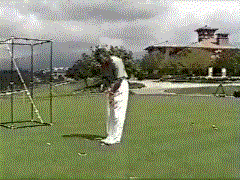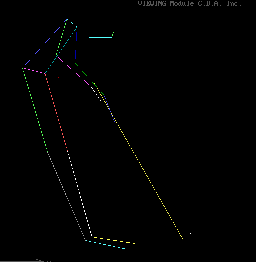

|
Comparison of Putting Kinematics
Alfred Finch, Ph.D., Gideon Ariel, Ph.D., & Ann Penny, Ph.D.
|
Purpose |
|

|
This study examined the effectiveness of a golf putter prototype and a traditional blade putter on the joint action necessary to complete a medium distance putt. A kinematic analysis of the upper body joints and torso actions was performed to determine if the putting technique utilized with the experimental style putter could reduce the joint action variability needed for the execution of a putt. |
|
Methods
Video graphic records were taken from a frontal and a 45 degree side view of 6 experienced golfer performing putts with a conventional and an experimental putter. The experimental putter was designed such that the putter’s blade was positioned in front and perpendicular to the shaft of the putter. This blade redesign resulted in the golfers supporting the golf club shaft along the anterior surface of their arm while crouched and facing the cup. This repositioning permitted the sighting of the cup with a frontal view rather than the traditional tilted side view. |
|

|
The subjects were permitted practice trials until they felt comfortable using each putter. Three putts with each putter from the same distance and position from the cup were performed outdoors at a golf club in California and videotaped at the rate of 60 fields per second.
A 3-dimensional reference cube using 11 fiducial points was placed in the field of view of both cameras simultaneously in order to convert the video images to real life scale. The third trial using each putter was selected for kinematic analysis and the camera view from each videotape was digitized using an Ariel APAS performance analysis system. |
| The 23 coordinates digitized included the following data points: the left foot, left ankle, left knee, left hip, right hip, right knee, right ankle, right foot, left hand, left wrist, left elbow, left shoulder, right shoulder, right elbow, right wrist, right hand, top of grip, club head, top of head, chin, right eye, left eye, and ball. The 2 camera views were synchronized by identifying the ball contact frame. Then the 2 synchronized camera views were transformed into real scale coordinates and the data point endpoint coord-inate positions were smoothed using a quintic spline function with a error value of 2. | |